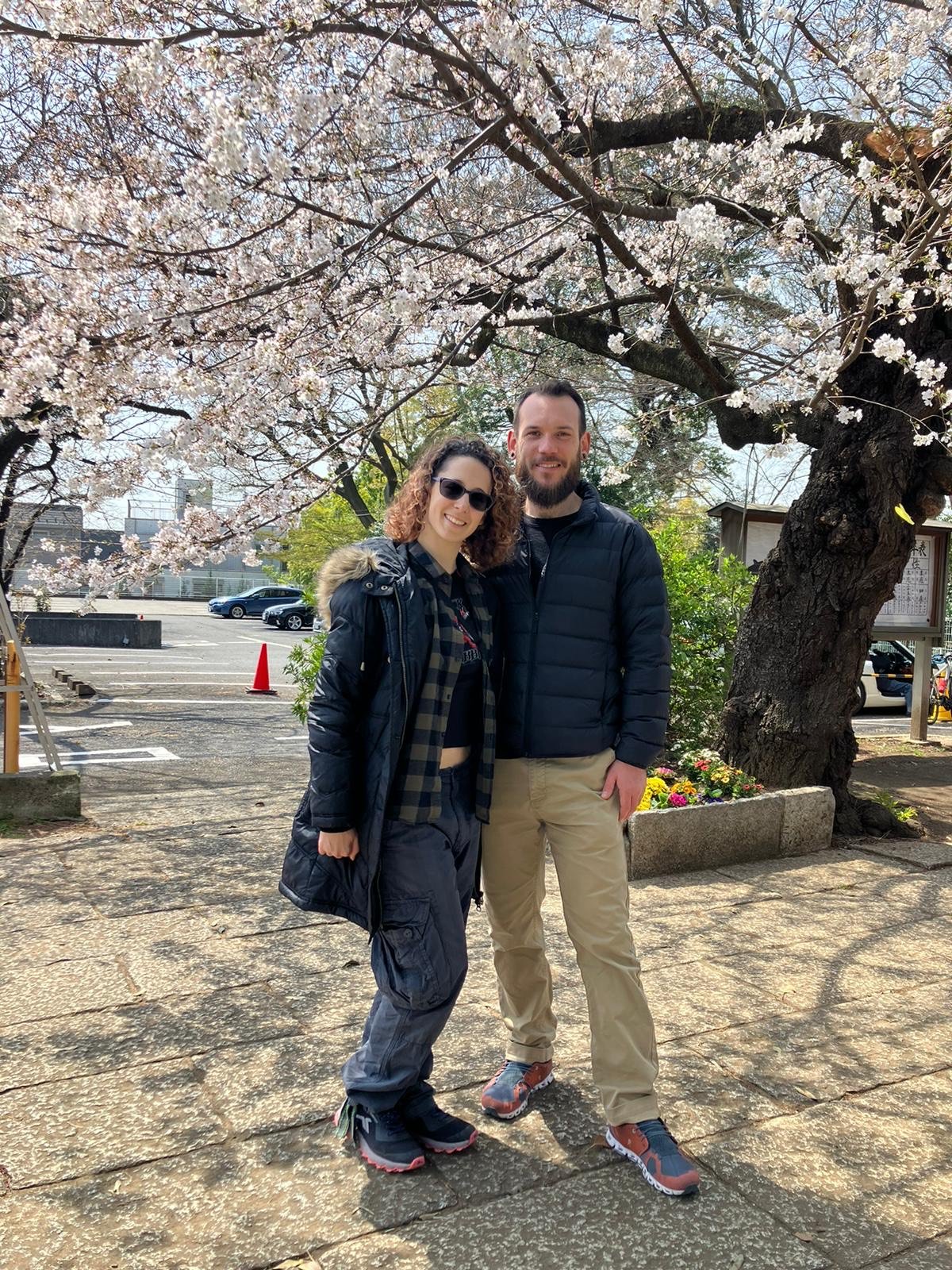The difference between cherry blossoms and plum blossoms -Japanese home cooking class in Tokyo
The sight of plum and cherry blossoms in full bloom is a quintessential Japanese spring tradition. Many people enjoy the beautiful scenery during hanami (flower viewing) in spring.
However, plum and cherry trees, as well as peach trees, have similar flower colors and appearances, and their blooming periods are also close. It can be difficult to distinguish them, and you might not know which flowers you're looking at.
Here, we'll introduce the characteristics and ways to distinguish between plum, cherry, and peach blossoms, which are representative of spring.
SAKURA in Meguro River in Tokyo
The main differences between cherry and plum blossoms are as follows:
Blooming Period
Cherry blossoms bloom from mid-March to late April. Plum blossoms, on the other hand, bloom from late January to late April, usually earlier than cherry blossoms.
Petal Characteristics
Cherry blossom petals have a notch at the tip and are heart-shaped. Plum blossom petals are round at the tip without notches.
Flower Attachment
Cherry blossoms grow in clusters at the end of long stalks (pedicels) and hang downwards. Plum blossoms have almost no stalk and bloom directly attached to the branches.
Plum blossoms(白梅)- Japanese home cooking class in Tokyo
Trunk Characteristics
Cherry tree trunks are reddish-brown with rough horizontal stripes and make a light sound when tapped. Plum tree trunks are darker and relatively rough.
Leaf Characteristics
For Somei Yoshino, the most common cherry blossom variety, leaves appear as the flowers are falling. Plum trees don't have leaves during the blooming period.
SAKURA in full bloom in Todoroki Fudoson temple in April ‘2024, Tokyo
These characteristics can help you distinguish between cherry and plum blossoms. However, there may be some variations depending on the specific variety.
History of Hanami
The history of hanami dates back to the Nara period. Here's a brief historical overview:
Nara Period
Aristocrats mainly appreciated plum blossoms. Cherry trees were considered sacred, and poems about cherry blossoms appear in the "Man'yoshu" anthology.
Heian Period
After the abolition of missions to Tang China in 894, aristocrats gradually began to appreciate cherry blossoms as the representative spring flower. In 812, Emperor Saga held a "flower feast" at Shinsenen, which is the first recorded hanami.
Kamakura to Azuchi-Momoyama Periods
The custom of hanami spread to samurai and townspeople. Cherry trees were planted in mountains and temples in Kyoto. Toyotomi Hideyoshi's hanami at Daigo and Yoshino are particularly famous.
Edo Period
Hanami became widely popular among commoners. The Somei Yoshino variety was created in the late Edo period, and many cherry blossom varieties were developed.
Meiji Period and Beyond
Many cherry trees were lost during wars but were preserved thanks to the efforts of gardeners. In 1886, a cherry tree-lined path was created along the Arakawa embankment, becoming a new hanami spot.
Today, hanami is enjoyed nationwide as a spring tradition in Japan and attracts many international tourists.
Hanami in Japanese Culture
Weeping plum tree(紅梅)
Development of Popular Culture
Established as a spring tradition: Hanami became an annual event for commoners and a widely popular spring activity.
"Noreikō" culture: Hanami provided an opportunity for people to enjoy regardless of social status, allowing for uninhibited behavior and daytime drinking.
Development of food culture: New foods related to hanami were created, such as "Chomeiji sakura mochi."
Changes in Urban Landscape
Development of cherry blossom viewing spots: Tokugawa Yoshimune planted cherry trees in various locations in Edo (Tokyo), creating new hanami spots.
Combination of disaster prevention and scenery: Cherry trees were planted along rivers like the Sumida, serving as embankments while creating beautiful landscapes.
Influence on Art and Culture
Subject of ukiyo-e: Hanami scenes became popular subjects in ukiyo-e prints.
Influence on kabuki: Cherry blossom motifs were incorporated into kabuki performances.
Cherry Blossom Variety Improvement
New varieties like Somei Yoshino were developed in the late Edo period, leading to the diversity of cherry blossom varieties we see today.
Establishment of Hanami Style
The roots of modern hanami style (setting up on the ground with blankets, eating, drinking, singing, and dancing) were established during the Edo period.
These changes deeply rooted hanami in Japanese culture as a spring tradition that continues to the present day.
Sakura with my guests from Australia- Japanese home cooking class in Tokyo
Hanami Etiquette
When enjoying hanami, it's important to be considerate of others. Here are some basic etiquette guidelines:
Take your trash home: Always take your garbage with you and keep parks and riverbanks clean. Littering is strictly prohibited.
Avoid loud noise: Don't be too noisy to avoid disturbing others. Enjoy quietly.
Only reserve necessary space: Secure space only for your group and be considerate of others. Taking up too much space is impolite.
Don't touch cherry trees: Avoid touching trees or branches, or plucking petals. When laying out sheets near tree roots, be careful not to damage them.
Follow local rules: Some parks or temples may have specific rules, so check in advance.
By following these etiquette guidelines, everyone can enjoy hanami comfortably.
SAKURA with my guests- Japanese home cooking class in Tokyo
Please book from here.
In my Japanese home cooking class in Tokyo, I meet my guests at Todoroki Station before making a delightful stop at Todoroki Fudoson Temple on our way to my home. From late March to early April, we'll have the opportunity to admire the beautiful cherry blossoms in full bloom.





